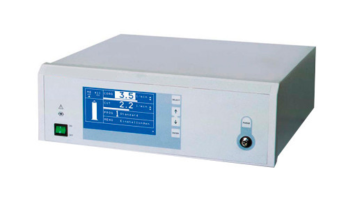Industrial automation is quickly becoming the most significant technology that manufacturers are using to improve their processes. In fact, it’s being used in every part of the manufacturing process from R&D, fabrication and assembly to quality control and shipping.
It has been proven that this automation can help companies save millions of dollars on labour costs while improving quality, efficiency and productivity.
Improves Quality and Efficiency
Industrial automation is revolutionising manufacturing processes by improving quality and efficiency. The main way that it does this is by reducing the risk of human error, which can be a major problem in many manufacturing processes.
In addition to reducing errors, industrial automation also improves productivity and reduces waste by automating repetitive tasks that would otherwise require constant monitoring by workers or machines.
Finally, industrial automation allows manufacturers to use their resources more efficiently–this means they can produce more with less labour while also using fewer raw materials (which saves money).
Reduces the Risk of Human Error
Industrial automation reduces the risk of human error by removing humans from the production process. The use of machines and robots means that there is no longer a need for manual labour or human supervision, which in turn eliminates the need for maintenance and training.

Increases Productivity
In the manufacturing industry, Industrial Automation is a machine that can be programmed to perform tasks such as loading and unloading containers or packaging materials. These machines are used in various industries such as food and beverage production, pharmaceuticals, automotive manufacturing and electronics.
They can also be employed in warehouses where they carry out repetitive tasks such as picking up products off shelves or moving materials between different locations within a facility.
Industrial Automation has been used for decades in these industries but their current capabilities far exceed what they could do just five years ago because they’re now smarter than ever before thanks to advances made in computer vision technology (CV). This means you’ll see more robots working alongside humans rather than replacing them altogether!
Predictive Maintenance
Predictive maintenance is the process of monitoring equipment and systems to detect early signs of failure. It can help avoid breakdowns and reduce costs by ensuring that maintenance work is carried out in a timely manner.
Predictive Maintenance provides companies with insights into their assets, enabling them to make better decisions about when repairs need to be carried out.
This leads to improved asset performance, reduced downtime and an improvement in overall productivity as well as cost savings due to less waste generated during unplanned shutdowns or unscheduled maintenance activities.
Conclusion
With the help of industrial automation, manufacturers can improve quality, reduce human error and increase productivity. This will result in a better product for consumers and increased profits for companies.
In addition, predictive maintenance allows manufacturers to plan ahead for equipment failures so they don’t disrupt production schedules or cause bottlenecks when they occur unexpectedly.




